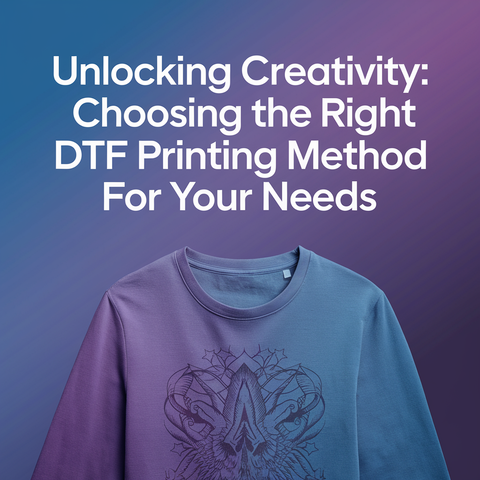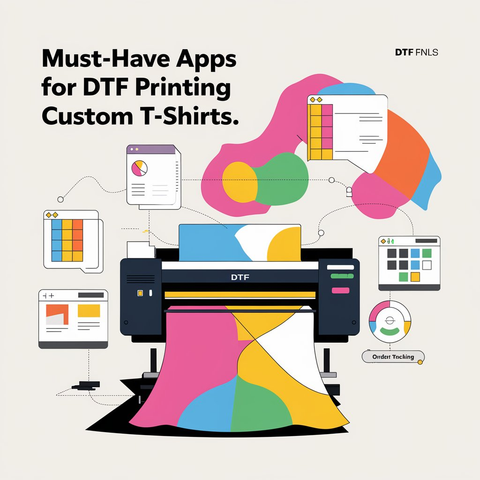Frequently Asked Questions
1. What are DTF transfers?
2. How do DTF transfers work?
3. What are the advantages of using DTF transfers?
4. What types of applications can DTF transfers be used for?
5. What tips can help someone get started with DTF transfers?
In the ever-evolving world of textile printing, one technique is gaining significant traction among creators and businesses alike: DTF transfers. Short for Direct to Film transfers, this innovative method revolutionizes the way we apply designs to various fabrics. Whether you are a seasoned print professional or just starting your journey into custom apparel, understanding DTF transfers can provide you with a competitive edge. In this comprehensive guide, we’ll explore what DTF transfers are, how they work, and their advantages over other printing methods.
What are DTF Transfers?
DTF transfers involve printing designs onto a special film that is then transferred onto fabric using heat and pressure. This technique utilizes a unique type of ink that adheres well to different textile surfaces, making it highly versatile for various applications. DTF transfers can be used on cotton, polyester, blends, and more, ranging from t-shirts to bags and even promotional items.
How Do DTF Transfers Work?
The process of creating and applying DTF transfers can be broken down into several key steps:
1. Design Creation
The first step is to create a digital design using graphic design software. High-quality designs are crucial, as they will determine how vibrant and detailed the final product will be. Ensuring that your design is in the right format—typically PNG with a transparent background—sets the stage for success.
2. Printing the Transfer
Once the design is finalized, it is printed onto a special DTF film using a DTF printer. The printer utilizes water-based inks that provide excellent color vibrancy and durability. After printing the design, an adhesive powder is sprinkled onto the wet ink. This powder acts as a bonding agent during the transfer process.
3. Curing the Transfer
After the adhesive powder is applied, the transfer is cured using a heat source. This step solidifies the adhesive and prepares it for application. It ensures that the ink and adhesive bond effectively, making the transfer more resilient against washing and wear.
4. Applying the Transfer
The final step involves placing the cured transfer onto the desired fabric. Utilizing a heat press, heat and pressure are applied, allowing the adhesive to bond the design to the fabric. Once cooled, the film is peeled away, revealing a vibrant, durable design!
The Advantages of DTF Transfers
Now that we understand the process, let’s dive into the advantages of using DTF transfers compared to other methods such as screen printing or heat transfer vinyl (HTV):
Versatility
Diving into the realm of DTF transfers, one of its significant perks is versatility. Unlike traditional methods that require specific types of fabrics or preparation, DTF can adhere to a wide range of materials, including cotton, polyester, and nylon blends. This ability to print on nearly any fabric expands your options dramatically and allows for creative freedom in your projects.
Cost-Effectiveness
For small businesses or independent artists, starting with DTF transfers can be financially advantageous. The setup cost is typically lower than that of screen printing, where extensive equipment is necessary. DTF printing also allows for low minimum order quantities, making it ideal for custom orders without the need for significant upfront investment.
High-Quality Results
DTF transfers are known for their vibrant colors and precise detail. The printing process captures fine details, which results in bold designs that stand out. Additionally, DTF transfers have excellent wash durability, meaning your designs are not only striking when first made but will last through numerous washes without fading.
Simplicity and Speed
The simplicity of creating DTF transfers means that intricate designs can be produced quickly. Once a design is set up, multiple transfers can be printed in a short amount of time. This efficiency is especially beneficial for businesses looking to fulfill large orders with tight deadlines.
Minimal Waste
Another advantage is the minimal waste generated during the DTF transfer process. Unlike screen printing, which can involve excess ink or materials, DTF is more streamlined, allowing you to use only what is necessary for each transfer. This means you can maintain a more sustainable practice while reducing costs.
Common Applications of DTF Transfers
DTF transfers can be used for a multitude of applications. Below are some common uses that can inspire your next project:
- Custom Apparel: T-shirts, hoodies, and caps.
- Promotional Products: Bags, socks, and hats branded with logos or designs.
- Merchandising: Customized items for bands, events, or businesses.
- Personal Projects: Family reunions, birthdays, or personalized gifts.
Tips for Getting Started with DTF Transfers
If you're eager to dive into the world of DTF transfers, here are some essential tips to help you get started:
Choose the Right Equipment
To begin your journey with DTF transfers, investing in the right equipment is paramount. A dedicated DTF printer, quality transfer film, and compatible heat press are essential tools. Pay special attention to the printer, as not all printers suit DTF printing—research to find the best fit for your needs.
Understand Ink Types
Using high-quality, water-based DTF inks can significantly affect your output quality. These inks come in various formulations designed to adhere well to the film and fabric, ensuring durability and vibrancy. Always choose inks that are compatible with your printing equipment for the best results.
Master Your Heat Press Settings
The effectiveness of DTF transfers relies heavily on proper heat application. Familiarize yourself with the ideal temperature, time, and pressure settings for the fabrics you plan to use. Conduct test runs to fine-tune your settings before committing to a batch of prints.
Design Responsibly
When creating designs, keep in mind the size and placement on the garment. Overly intricate details can complicate the transfer process and may not produce the desired results. Simple, bold designs often yield the best visual impact.
Exploring the Future of DTF Transfers
The DTF transfer method is continually evolving. As technology advances, we can expect improvements in ink formulations, printing speeds, and overall efficiency. Innovations may also include eco-friendly inks and sustainable materials for films, boosting the sustainability aspect of this printing method.
Embracing Your DTF Transfer Journey
As we have explored, DTF transfers present an exciting opportunity for creators, artists, and businesses looking to expand their offerings with custom printed apparel and products. Understanding the mechanics, advantages, and applications can set you apart in the competitive market of custom printing. Whether for commercial use or personal projects, diving into DTF transfers could lead to a creative realm full of possibilities. So, gear up, explore your creativity, and let DTF transfers take your custom design game to the next level!



